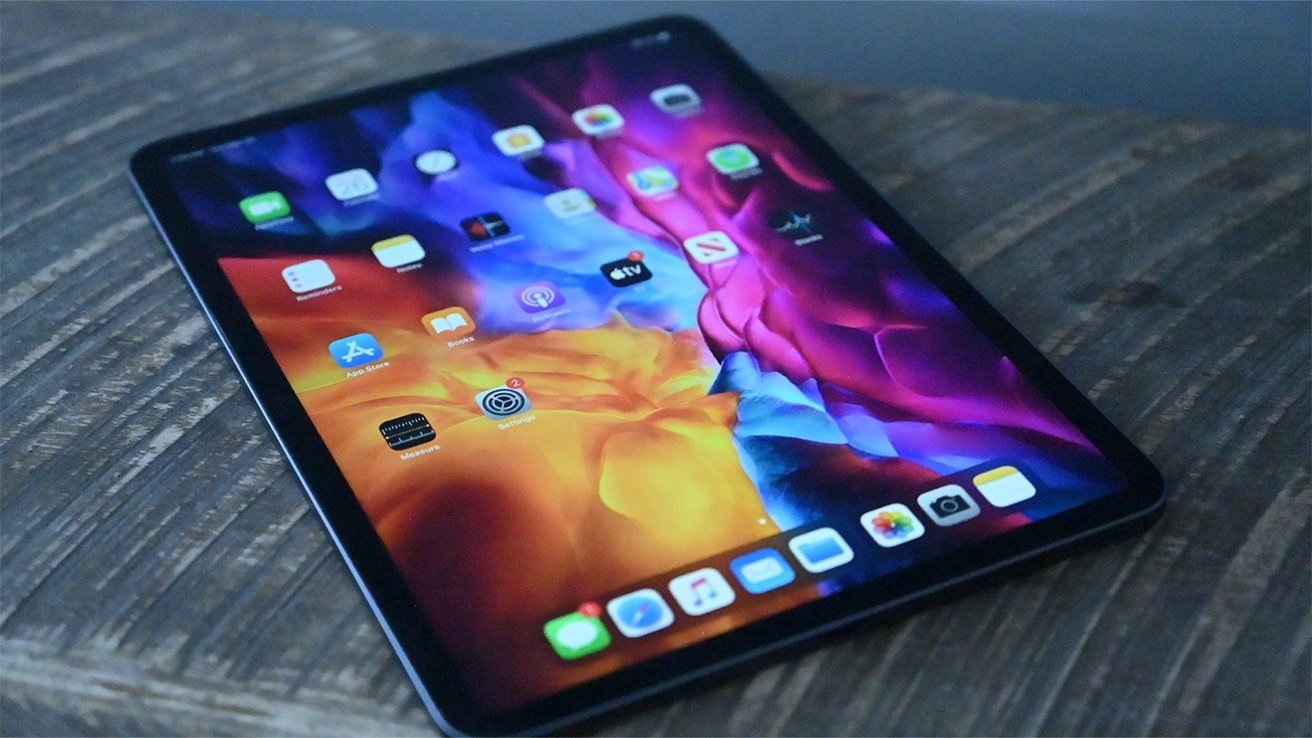A new supply chain analyst report suggests that Apple will begin converting its existing iPad lineup to OLED as soon as 2026, with a new folding tablet coming shortly after.

iPad Pro
The report, which comes courtesy of Display Supply Chain Consultants (DSCC), suggests that Apple will introduce an 8.5-inch OLED iPad mini in 2026. This isn't the first time that DSCC has suggested it, either, as DSCC CEO Ross Young had taken this stance in October 2024.
DSCC suspects that Apple will upgrade both the 11-inch and 13-inch iPad Air to OLED in 2027. This is in line with another rumor from August, which says that Samsung Display will be selected as the main supplier of OLED panels for the iPad Air.
Initially, it was believed that the iPad Air would not get an OLED upgrade until 2028.
According to the report, Apple could also release an 18.8-inch foldable iPad Pro in 2027. A day before DSCC's report was released, another report said that Apple would be releasing a giant foldable iPad that is approximately the size of two iPad Pro tablets side-by-side, but placed the release date in 2028.
The report shares much in common with a recently released product roadmap that had appeared on X. It too predicted an OLED iPad mini in 2026, OLED iPad Air models in 2027.
That report also suggested that an 18.8-inch "foldable" would be released in 2028.
In November, a report said the MacBook Air OLED display was delayed from a rumored 2027 release to 2028.
As with any rumor for a product more than a year away, take it with a grain of salt. That said, Ross Young is as good as it gets when it comes to details from the display supply chain.
What OLED does for Apple
Moving iPads to OLED is a long-standing rumor that's been tossed about for many years, and always seems to be two or more years away. It's a logical extension of the technology from the Apple Watch and iPhone, though.
There are many elements of OLED that borrow heavily from TFT LCD, but there are still some fundamental differences. Like TFT LCD, OLED uses thin film layers, a grid of pockets filled with a liquid to create pixels, and colored filters to change the color of light.
Unlike TFT LCD, the big differentiator is the liquid that is put into that film sandwich. An organic compound is used, one that emits light when a current is passed through it. This means that each pixel is self-illuminating and eliminates the need for a backlight.
This offers quite a few advantages over TFT LCD, such as an OLED screen being thinner by not requiring a backlight in order to function. This can also make the display assembly lighter and simpler to construct in some cases.
By having a light source per pixel, this also means that OLED can provide far higher contrast levels than TFT OLED. A TFT screen generally won't show pure black for some pixels, as the backlight will be on for all pixels equally, and so some light will bleed through and show a very dark grey instead.
Since there's no backlight, OLED is also a great candidate for flexible displays, such as those used in foldable devices like the Samsung Galaxy Fold and the rumored "iPhone Fold." While great, OLED panels have their own issues, such as the relatively high cost of production due to a need for clean environments devoid of dust and water. Each is easily capable of contaminating the display, ruining it partially useless. Apple started using OLED in the iPhone X and the Apple Watch, and has slowly expanded its use to cover the entire iPhone range.
